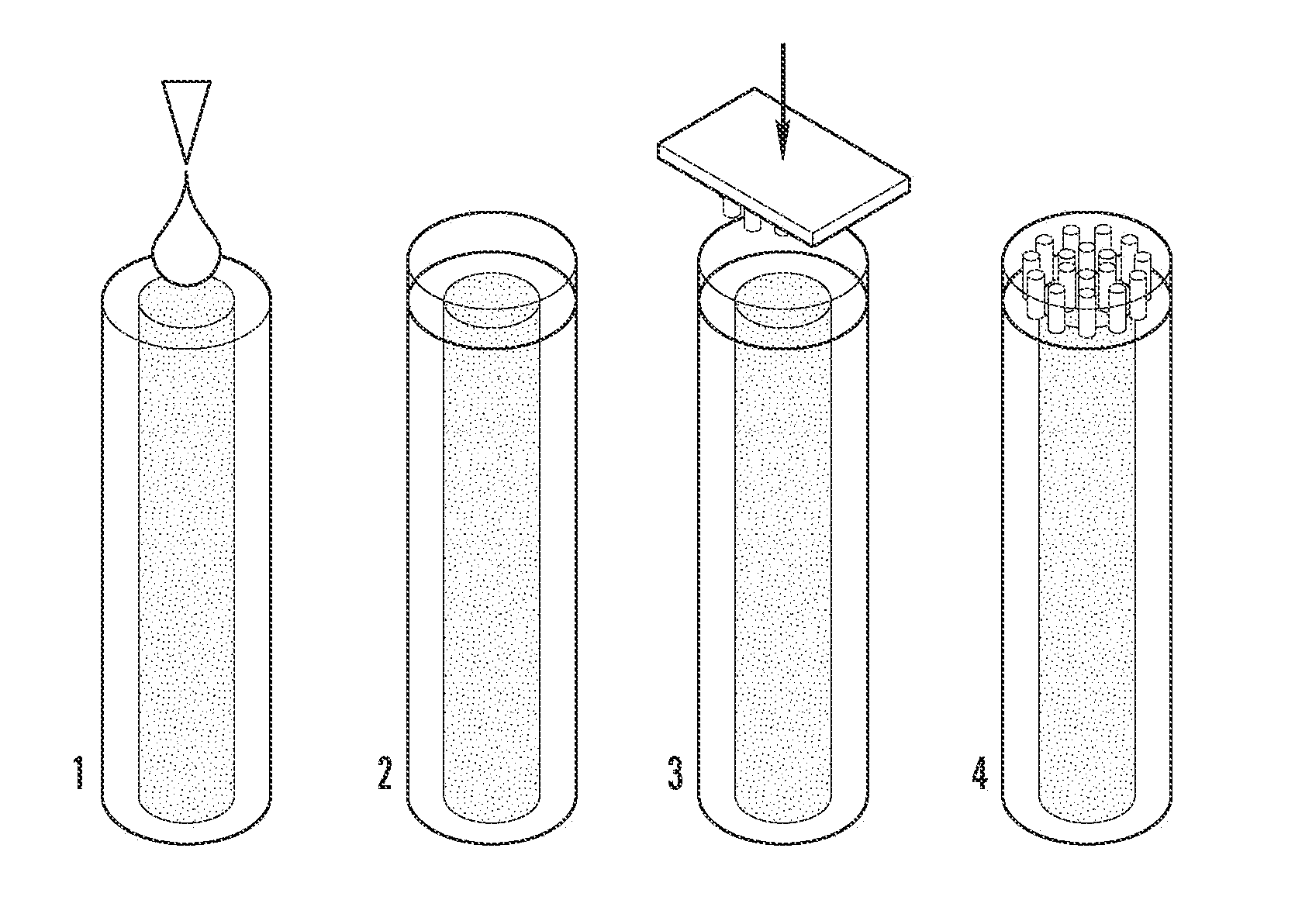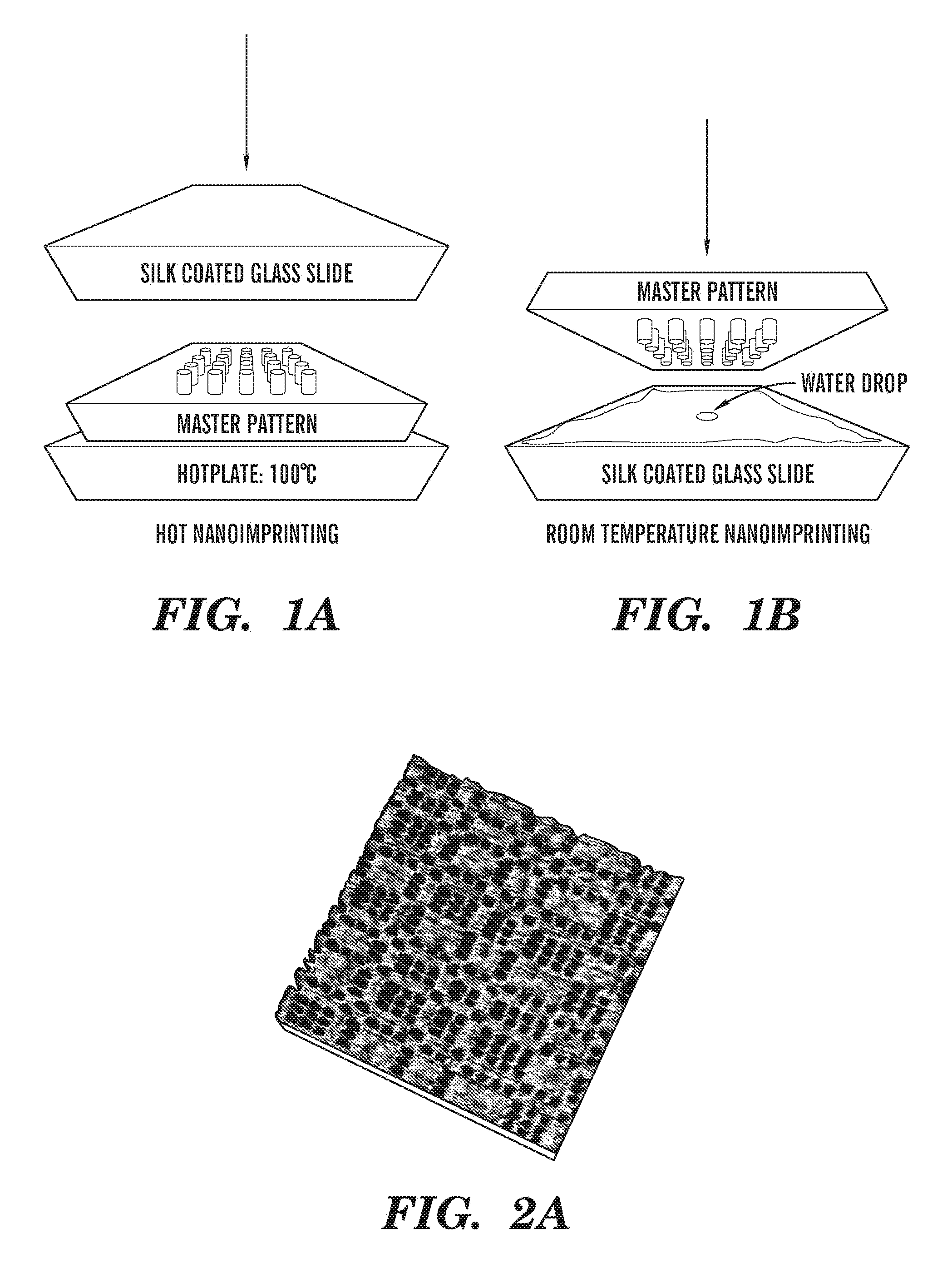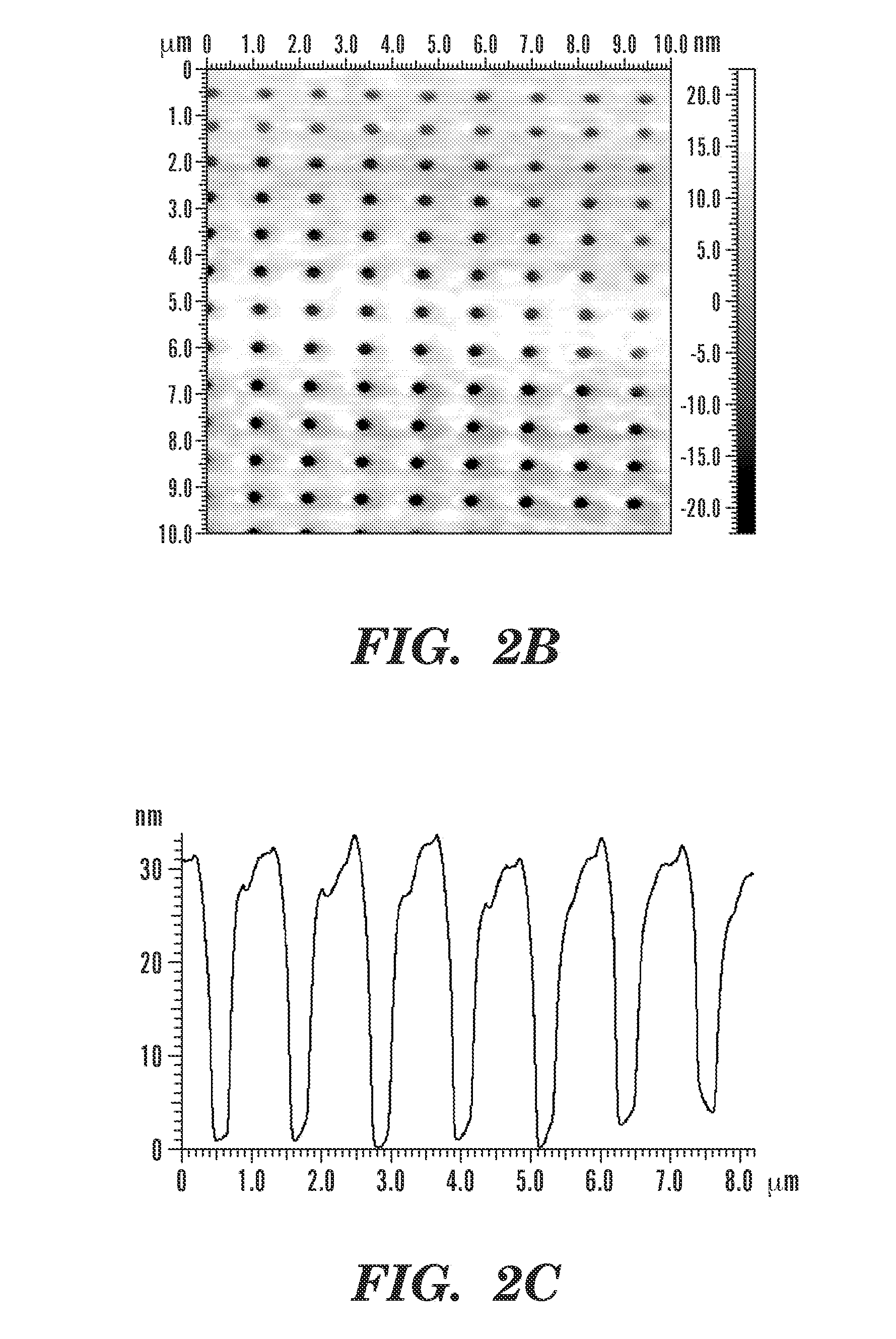Nanoimprinting of silk fibroin structures for biomedical and biophotonic applications
a silk fibroin and nano-printing technology, applied in the field of nano-printing, can solve the problems of not being convenient for rapid production of multiple devices, imparting some artifacts to the film, and taking 12 to 36 hours to cast, so as to increase the glass temperature and/or water-solubility of silk fibroin.
- Summary
- Abstract
- Description
- Claims
- Application Information
AI Technical Summary
Benefits of technology
Problems solved by technology
Method used
Image
Examples
example 1
Formation of Silk Fibroin Films
[0082]Production of silk fibroin solutions has been described previously. See Perry et al., 2008; McCarthy et al., 54 J. Biomed. Mats. Res. 139 (2001). Briefly, sericin, a water-soluble glycoprotein bound to raw fibroin filaments, was removed from the silk strands by boiling Bombyx mori cocoons in a 0.02 M aqueous solution of NaCO3 for 60 min. Thereafter, the remaining silk fibroin bundle was rinsed thoroughly in purified water and allowed to dry overnight. The dry fibroin bundle was then dissolved in a 9.3 M aqueous solution of LiBr at 60° C. for 4 hr. The LiBr salt was then extracted from the solution over the course of three days, through a water-based dialysis process using Slide-A-Lyzer® 3.5K MWCO dialysis cassettes (Pierce, Rockford, Ill.). Any remaining particulates were removed through centrifugation and syringe-based micro-filtration (5 μm pore size, Millipore Inc., Bedford, Mass.). This process can yield 8%-10% (w / v) silk fibroin solution wit...
example 2
Nanoimprinting of a Silk Fibroin Film
[0086]Silk nanoimprinting methods presented herein harness the ability to adjust the silk fibroin film glass transition temperature, which depends on the silk fibroin's absorbed moisture. See Hoagland et al., 63 J. Appl. Polymer Sci. 401 (1997). For silk fibroin films prepared at ambient humidity (˜35%) the glass transition temperature is ˜100° C. The glass transition temperature of silk fibroin film can be reduced to room temperature (ambient temperature) when it is water-saturated.
[0087]To nanoimprint silk films at ambient humidity, a hot embossing process was employed whereby a silk film was pressed (˜50 psi) on to a heated (100° C.) master pattern for 5 sec (FIG. 1A). After imprinting, the master pattern adhered to the silk film. The master pattern was then removed easily by levering-off with a razor blade after cooling slightly (60 sec). No mold surface treatments (e.g., non-stick treatments) were necessary. For examples of films imprinted w...
example 3
Characterization of a Nanoimprinted Silk Films
[0091]To demonstrate the applicability of nanoimprinting techniques of the present invention to produce a wide variety of nanopatterned photonic silk films, several different master patterns were used for the silk film imprinting. The master patterns used herein included a 3600 groove / mm holographic diffraction grating (Edmund Optics, Inc., Barrington, N.J.), and chromium or titanium nanoparticle (200 nm in diameter and 35 nm in height) arrays arranged in periodic or Rudin-Shapiro (R-S) geometries and fabricated by electron beam lithography on silicon substrates with varying lattice constants between 700 nm and 250 nm. See Dallapiccola et al., 16 Opt. Express 5544-55 (2008); Gopinath et al., 8 Nano Lett. 2423-31 (2008). The areas of the masks range from 0.5 cm2-1 cm2.
[0092]The nanoimprinted silk films were characterized with scanning electron microscopy (SEM), atomic force microscopy (AFM), and optical microscopy. The aperiodic R-S patte...
PUM
| Property | Measurement | Unit |
|---|---|---|
| Temperature | aaaaa | aaaaa |
| Temperature | aaaaa | aaaaa |
| Time | aaaaa | aaaaa |
Abstract
Description
Claims
Application Information
 Login to view more
Login to view more - R&D Engineer
- R&D Manager
- IP Professional
- Industry Leading Data Capabilities
- Powerful AI technology
- Patent DNA Extraction
Browse by: Latest US Patents, China's latest patents, Technical Efficacy Thesaurus, Application Domain, Technology Topic.
© 2024 PatSnap. All rights reserved.Legal|Privacy policy|Modern Slavery Act Transparency Statement|Sitemap



